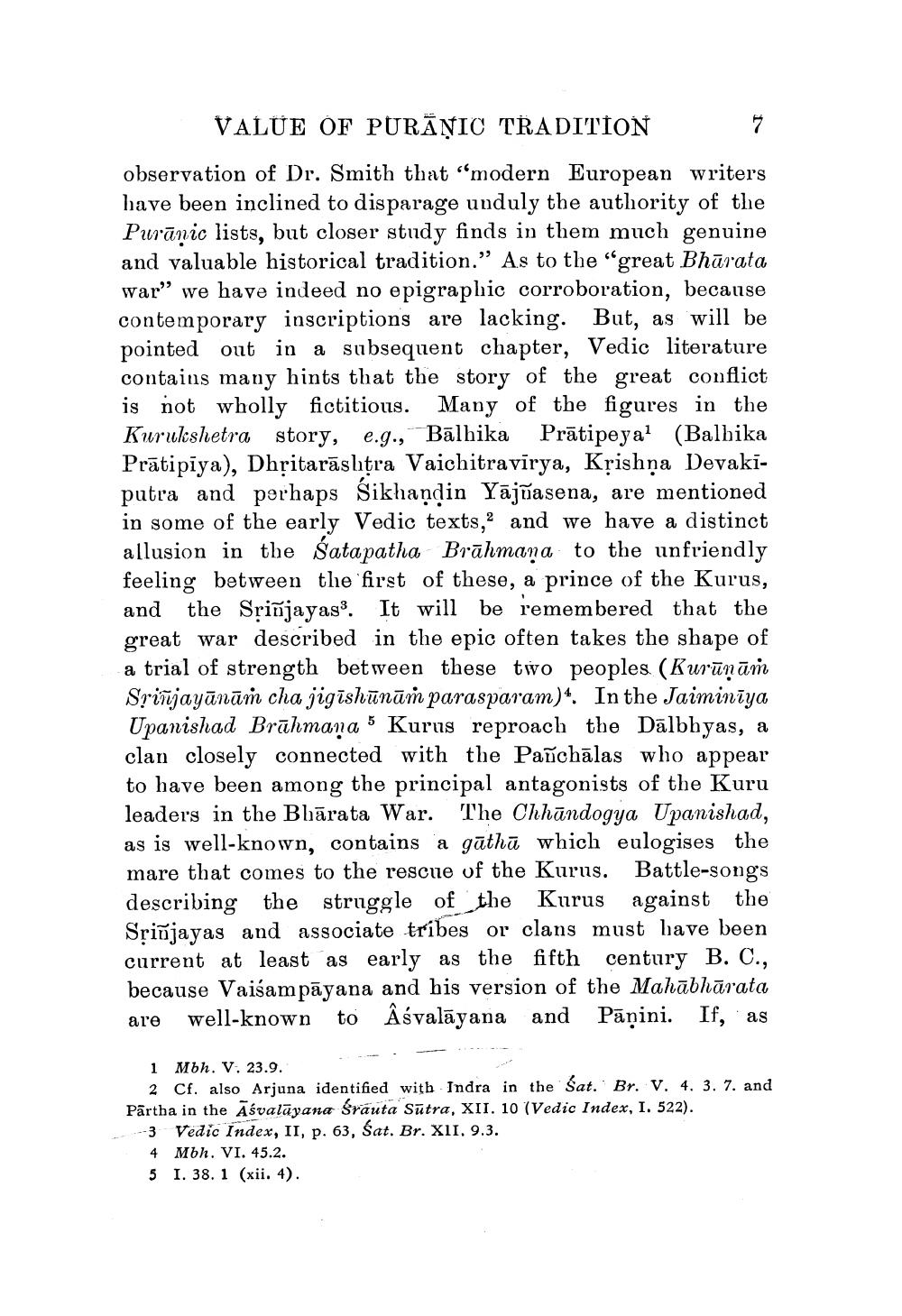________________
VALUE OF PURĀNIC TRADITION observation of Dr. Smith that “modern European writers have been inclined to disparage unduly the authority of the Purānic lists, but closer study finds in them much genuine and valuable historical tradition.” As to the "great Bhārata war” we have indeed no epigraphic corroboration, because contemporary inscriptions are lacking. But, as will be pointed out in a subsequent chapter, Vedic literature contains many hints that the story of the great conflict is not wholly fictitious. Many of the figures in the Kurukshetra story, e.g., Bālhika Prātipeyal (Balbika Prātipīya), Dhritarāslţra Vaichitravīrya, Krishna Devakiputra and perhaps Sikhaņdin Yājñasena, are mentioned in some of the early Vedic texts, and we have a distinct allusion in the Satapatha Brāhmaṇa to the unfriendly feeling between the first of these, a prince of the Kurus, and the Sriñjayas. It will be remembered that the great war described in the epic often takes the shape of a trial of strength between these two peoples (Kurūņām Sriñjayānām cha jigīshūnāṁ parasparam)*. In the Jaiminīya Upanishad Brāhmana 5 Kurus reproach the Dālbhyas, a clan closely connected with the Pañchālas who appear to have been among the principal antagonists of the Kuru leaders in the Bhārata War. The Chhāndogya Upanishad, as is well-known, contains a gāthū which eulogises the mare that comes to the rescue of the Kurus. Battle-songs describing the struggle of the Kurus against the Sșiñjayas and associate tribes or clans must bave been current at least as early as the fifth century B. C., because Vaisam pāyana and his version of the Mahābhārata are well-known to Âśvalāyana and Pāṇini. If, as
1 Mbh. V. 23.9.
2 Cf. also Arjuna identified with Indra in the Sat. Br. V. 4. 3. 7. and Pārtha in the Āśvalāyana Srauta Sutra, XII. 10 (Vedic Index, I. 522). -3 Vedic Index, II, p. 63, Sat. Br. XII. 9.3. 4 Mbh. VI. 45.2. 5 I. 38.1 (xii. 4).




